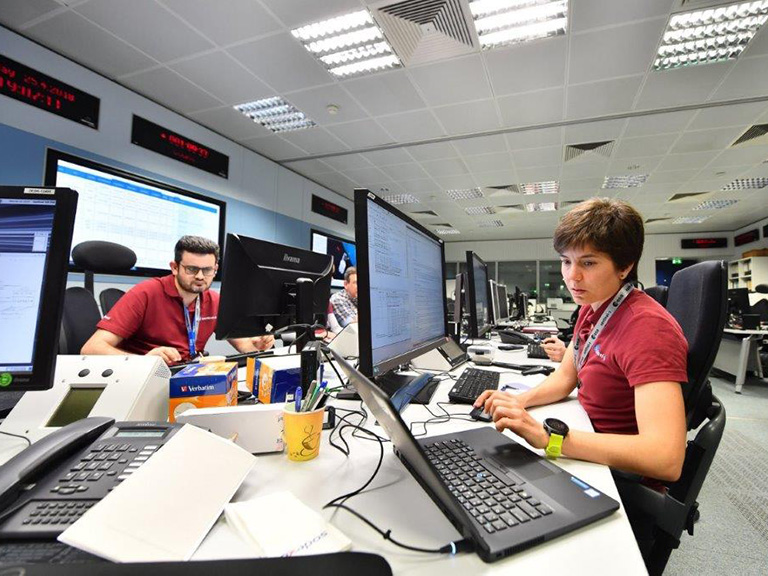Stories
It takes an expert to navigate in space
Which is one of the most challenging and fascinating disciplines in space science? Flight Dynamics! It takes a lot of knowledge in Vector Algebra, Kinematics, Classical Mechanics and Orbital Mechanics to master the art of flying a spacecraft. People with an outstanding academic background usually hold this position (mostly with Masters and/or PhDs in Aerospace/Aeronautical Engineering, but also Physicists and Mathematicians).
Our Engineering Services division is proud to have such a brilliant team working within the Flight Dynamics Division of ESA/ESOC in Darmstadt, Germany.
Let them help us understand better this fascinating world of orbits and trajectories!
Ramon Pardo de Santayana (FD Team coordinator), what do Flight Dynamics Engineers do exactly?
“FD engineers navigate satellites in space. This means making sure that spacecraft follow the trajectory required to fulfil their mission e.g. reach a particular orbit around the Earth, enter Venus orbit or visit the Jupiter Moons. Additionally, spacecraft need to be accurately pointed such that their payloads are oriented towards their targets e.g. a volcanic eruption on Iceland, a particular star or a Mars valley. All of this while ensuring periodic ground contact monitoring their health and respecting spacecraft constraints: power, thermal, mechanical, etc. For this reasons FD engineers work in close coordination with spacecraft manufacturers, Flight Control Teams, Ground stations, Scientists and Payloads.”
Who is the typical Flight Dynamics Engineer?
“In general FD engineers need to have a deep understanding of mathematics and physics as well as analytical and programming skills. For these reasons, their background is usually from the aerospace engineering field”.
Let’s take a deeper insight into the subsystems and tasks they’re involved with.
Jordi Freixa Mallol about Telemetry Monitoring:
“Raw telemetry is regularly retrieved, processed into physical magnitudes, analysed and archived. Sometimes telemetry is monitored life during important operations (e.g a Launch, deployments, separations, landings) or to give a GO-NOGO”.
David Jesch about Orbit Determination:
“The past trajectory of the satellite can be reconstructed in great accuracy using radiometric data e.g. ranging, Doppler or GPS. Camera images can also be used when navigating around small bodies such as comets or asteroids. The orbit is also propagated into the future using models of the gravity field, atmospheric drag, solar radiation pressure, etc.”
Mikel Catania about Manoeuvre Optimization:
“A manoeuvre strategy has to be put in place to be able to change the current trajectory to follow the planned trajectory. Manoeuvres direction, magnitude and timing have to be optimized to minimize fuel consumption and extend the mission life”.
Juan Manzanero about Command Generation:
“The desired manoeuvres and pointing profiles have to be translated into parameters that the spacecraft understands and are sent via telecommand. Additionally, solar panels have to be oriented towards the Sun and antennae towards the Earth”.
Cristina Santana Camprubi about Test and Validation:
“All operations are checked by a team that runs independent tools in parallel. This ensures the quality and reliability of our processes. In addition to this, the Test and Validation team coordinates all the test, simulations and training campaigns”.
Photo: Cristina Santana Camprubi during a simulation. Credits: ESA/Mai 2018

